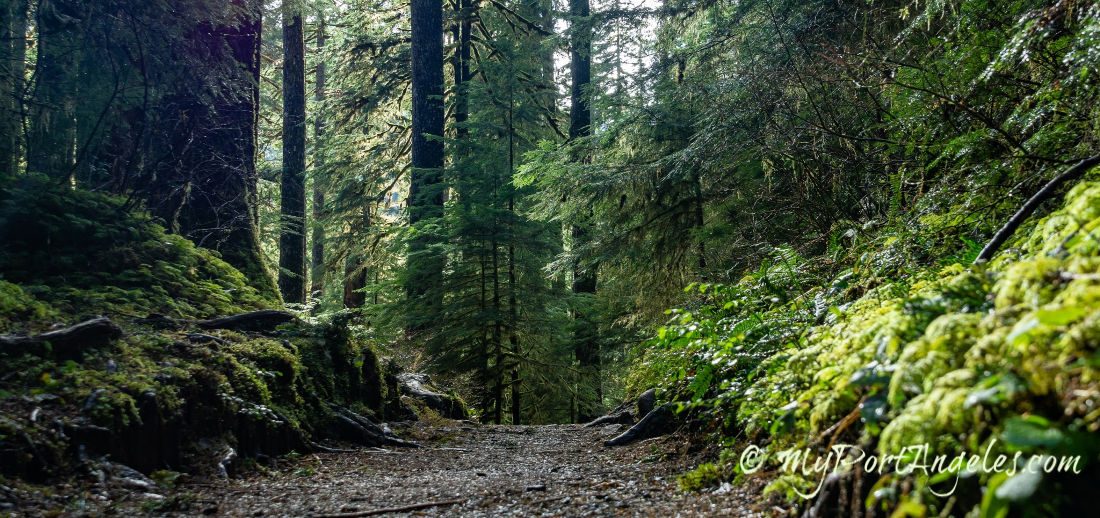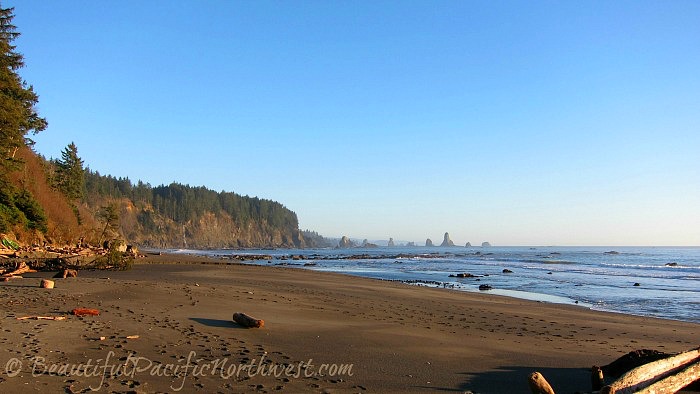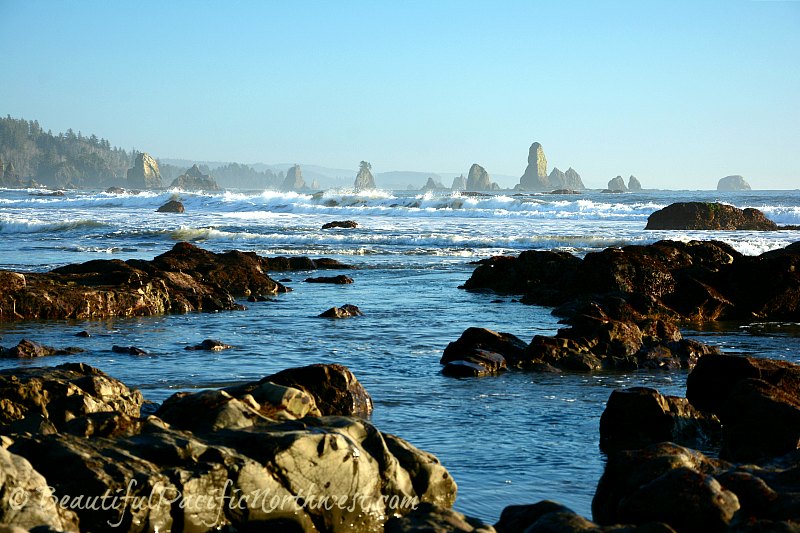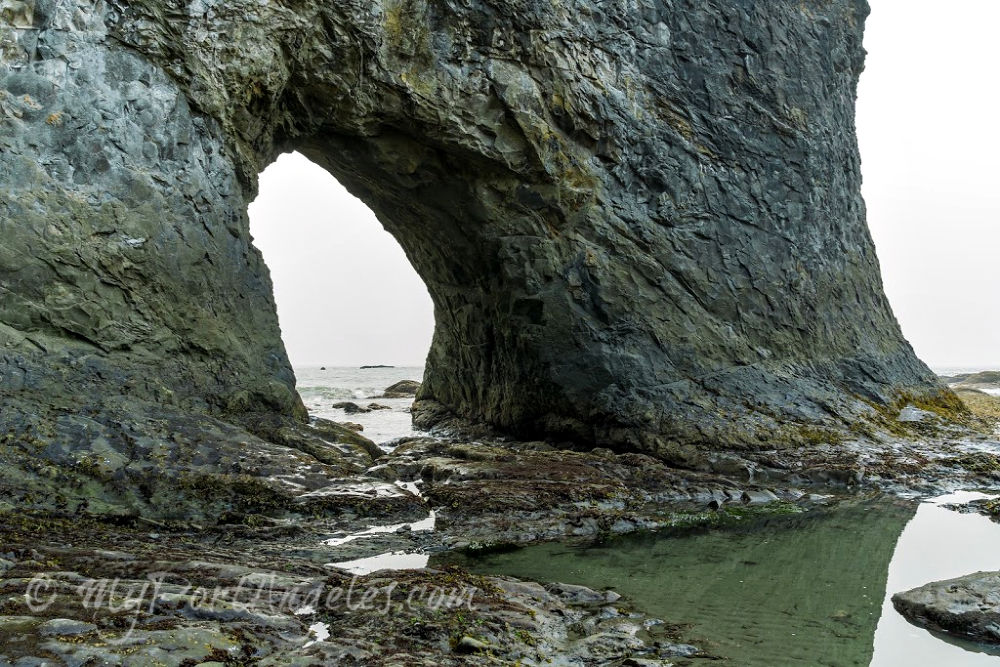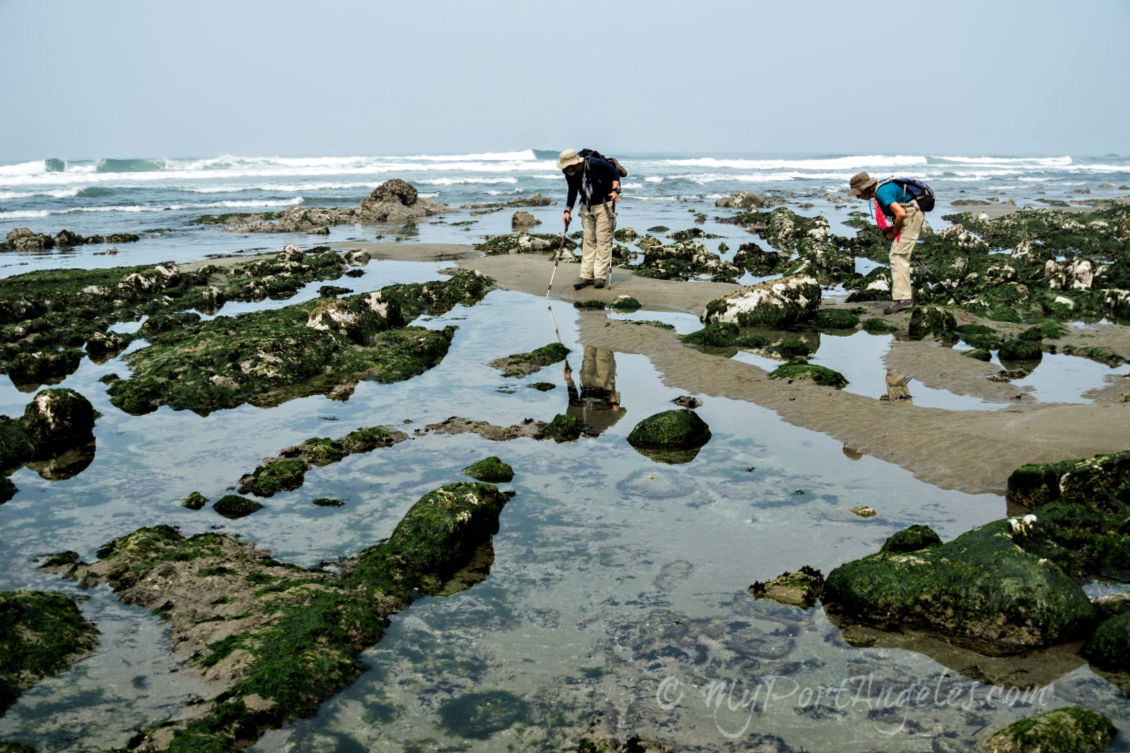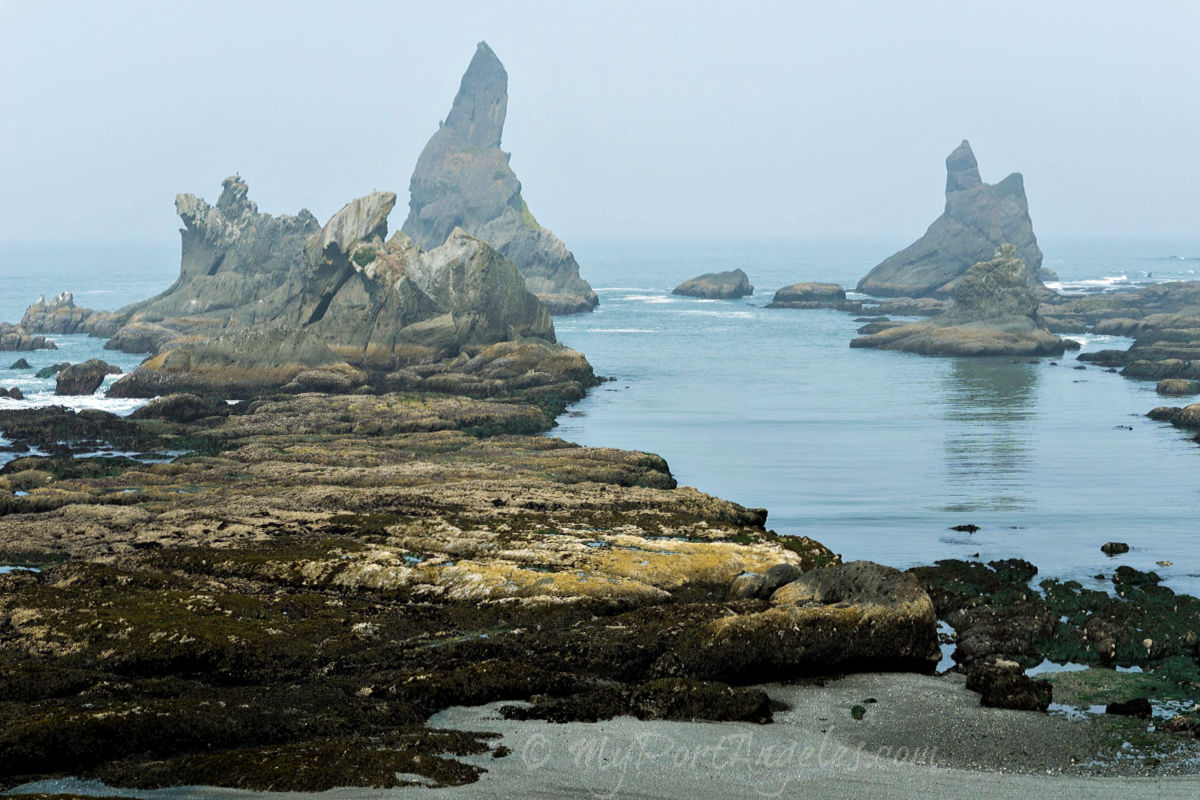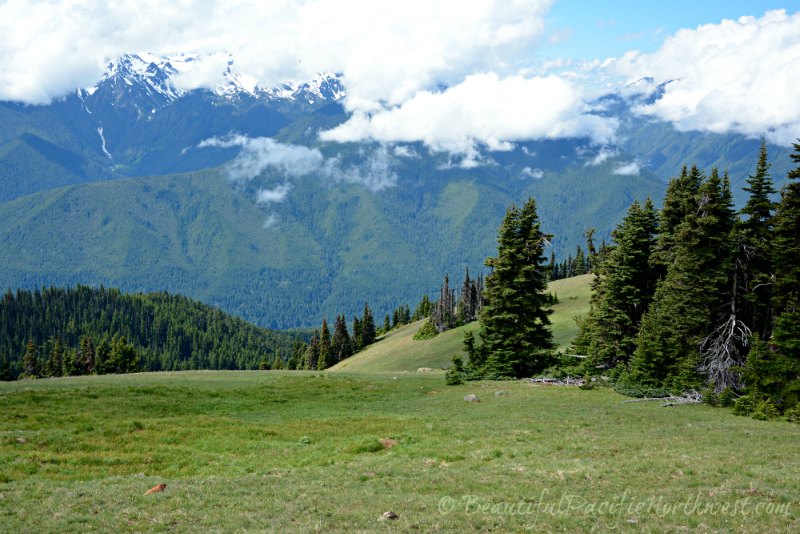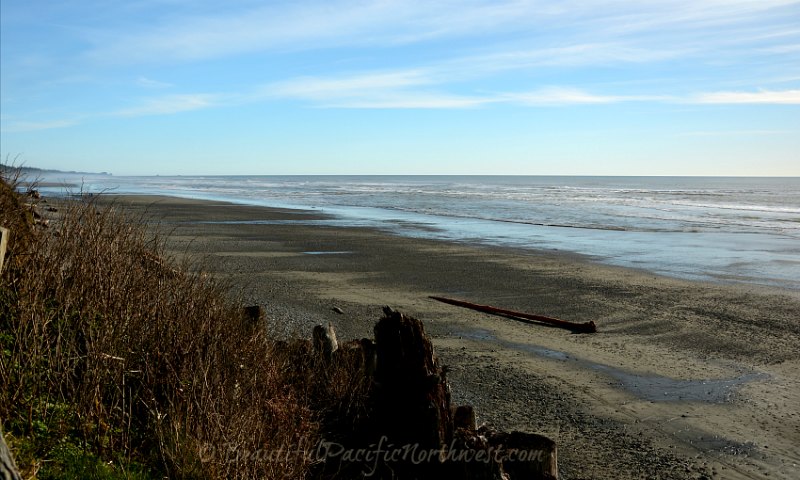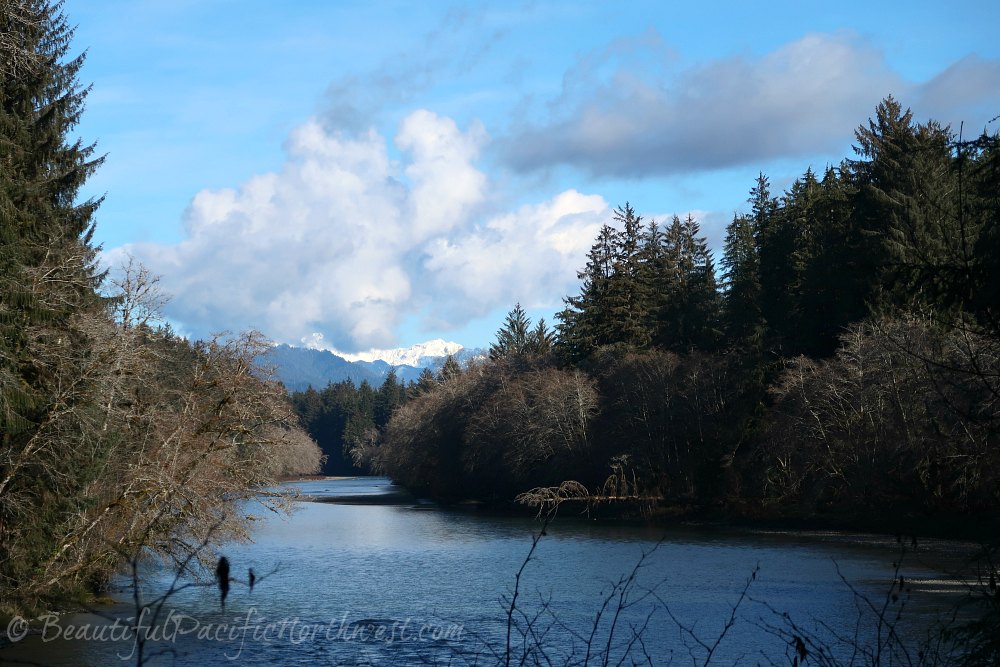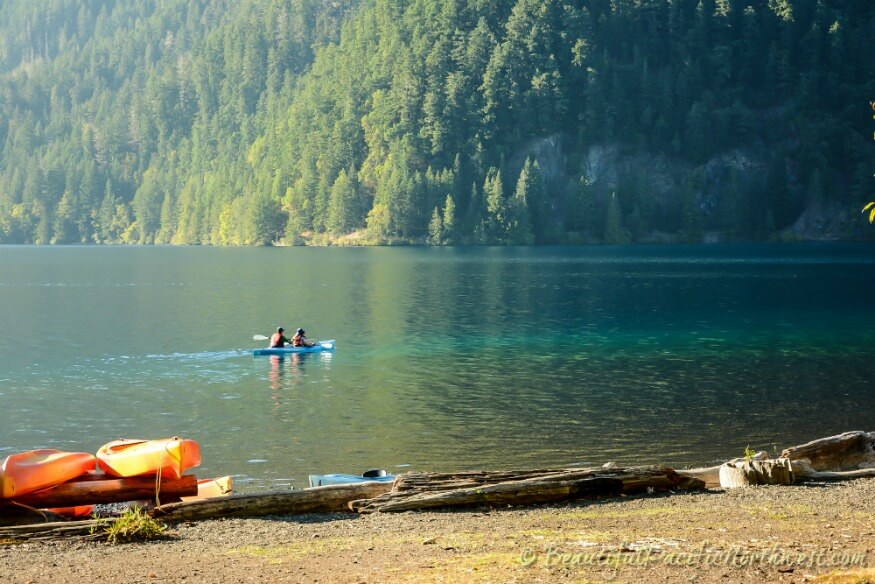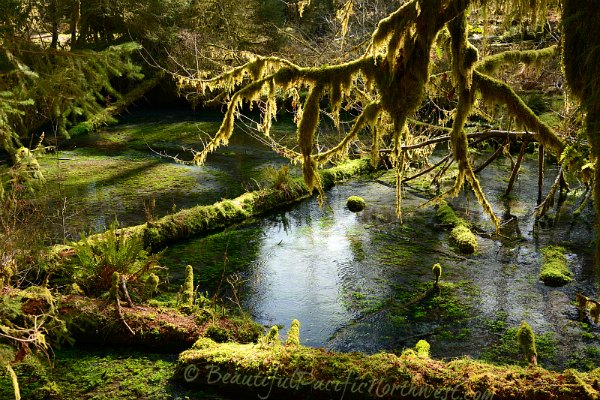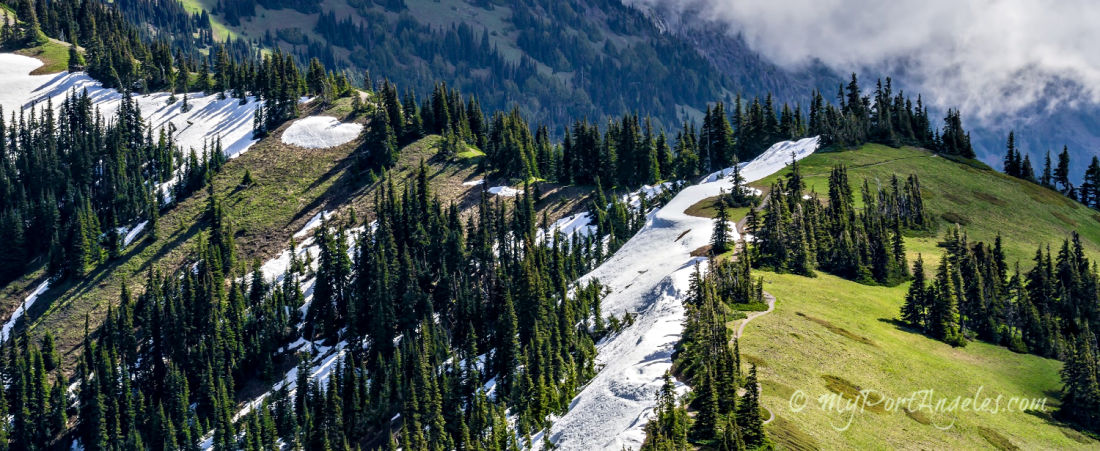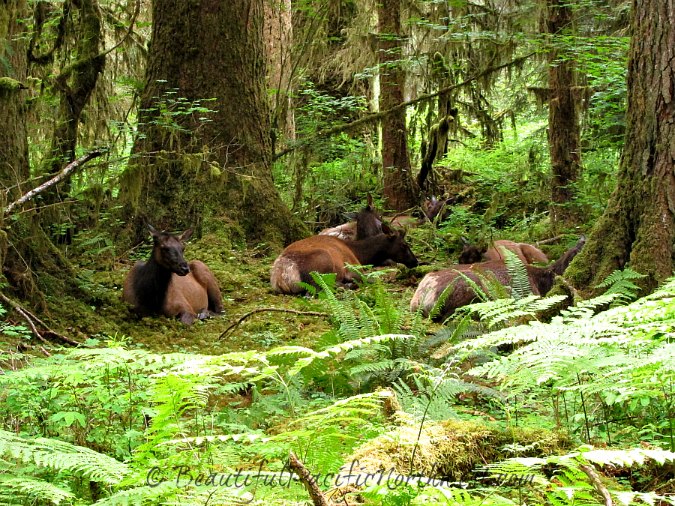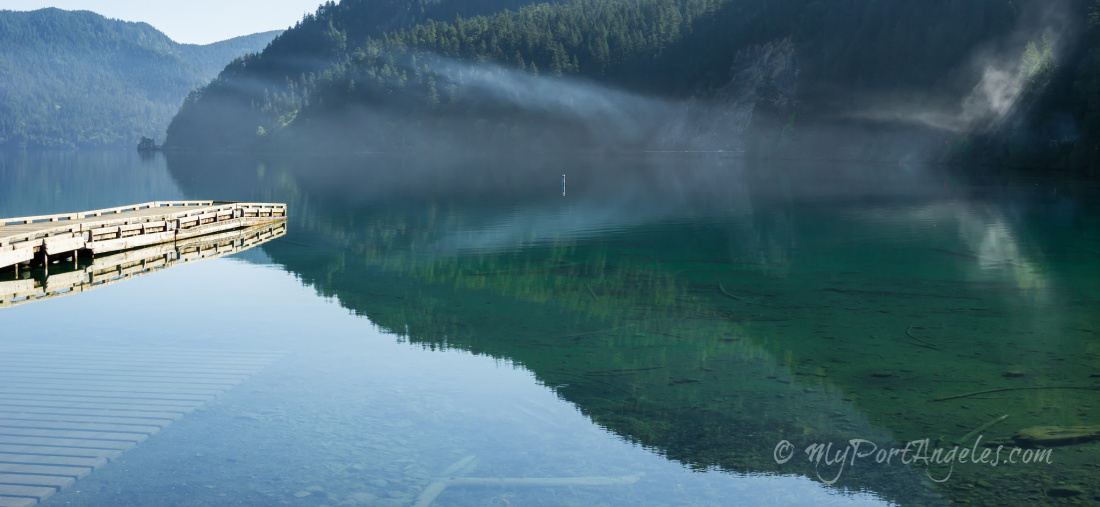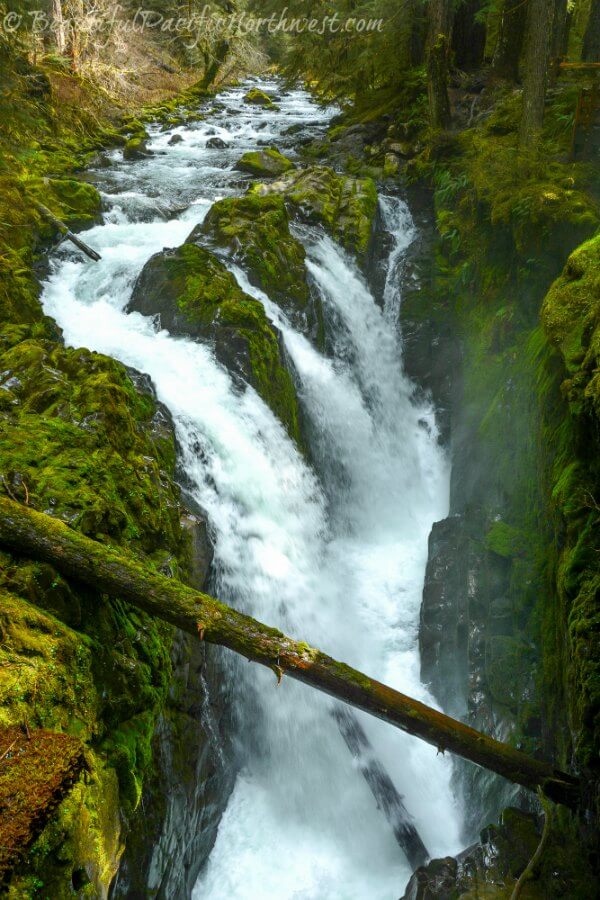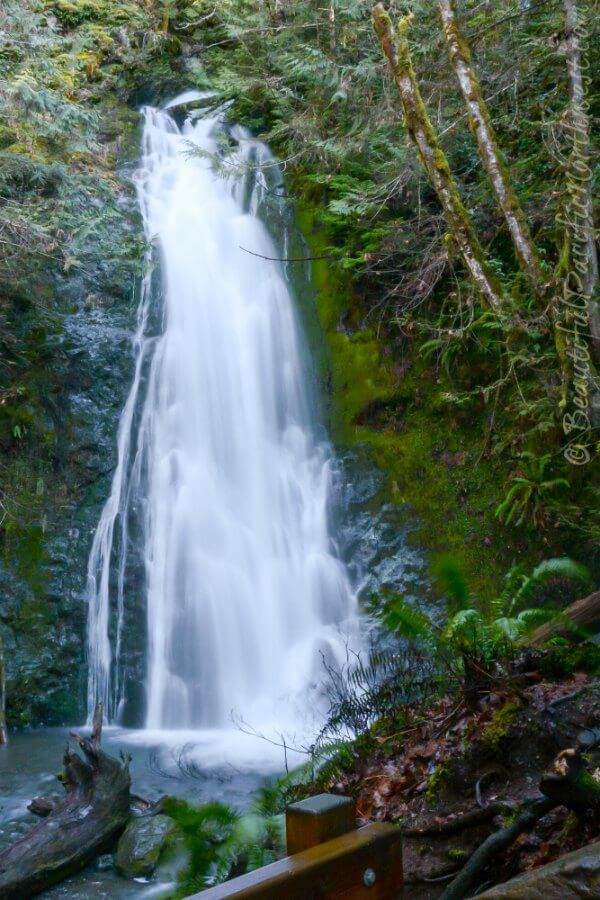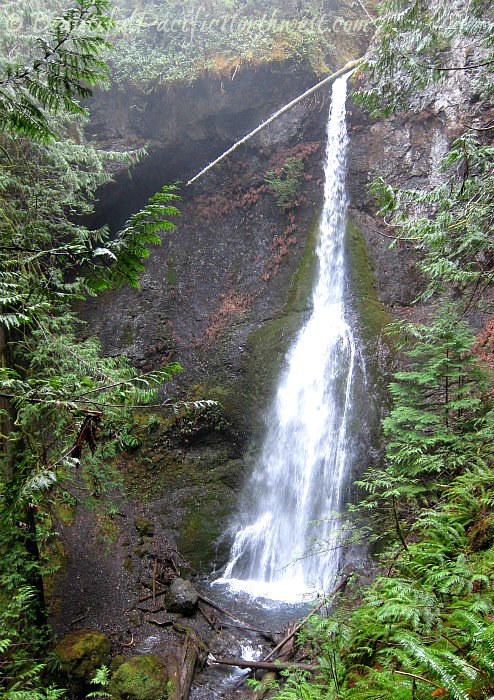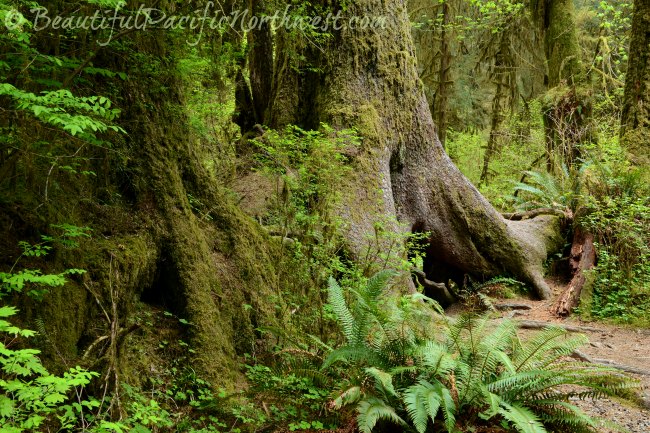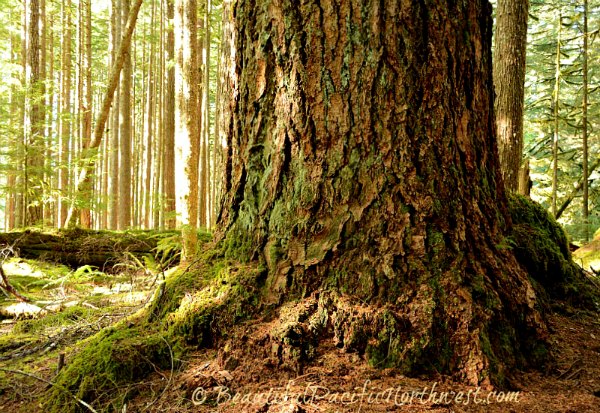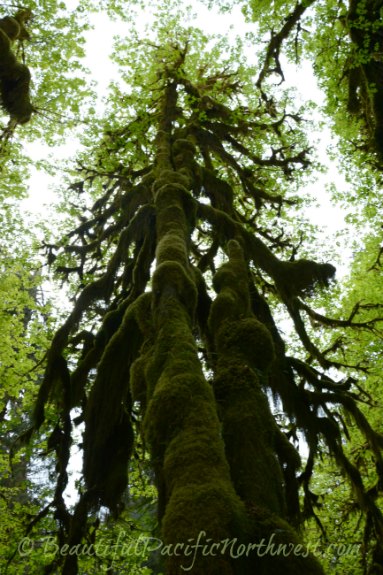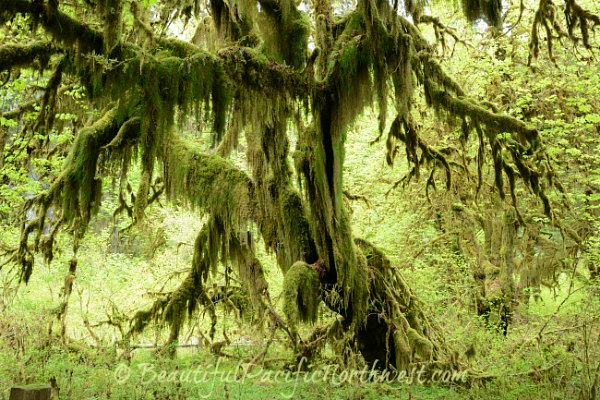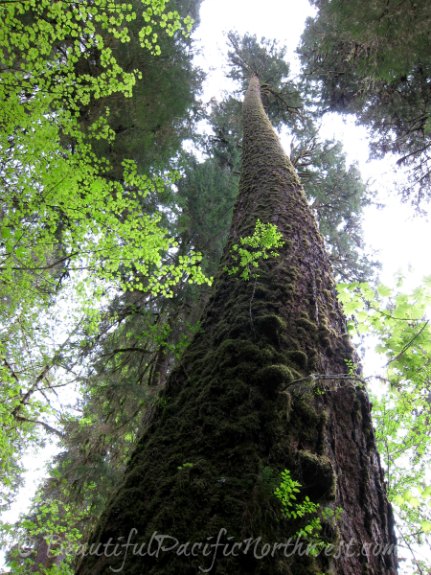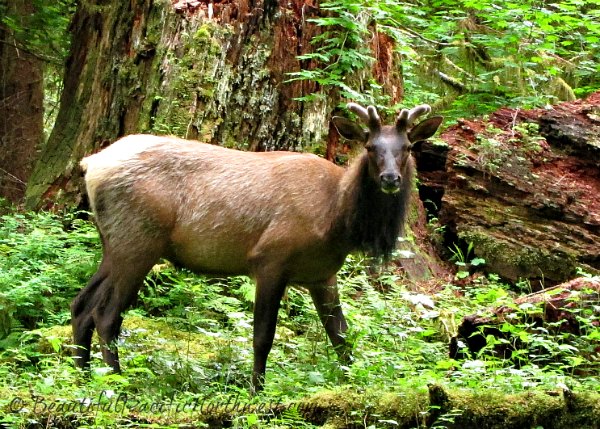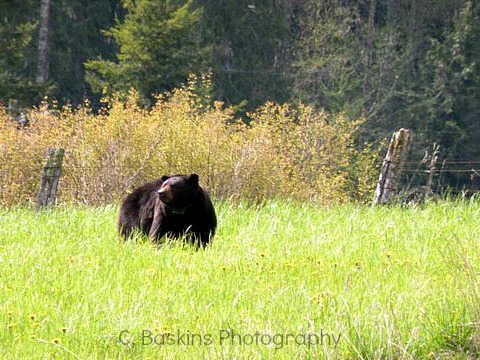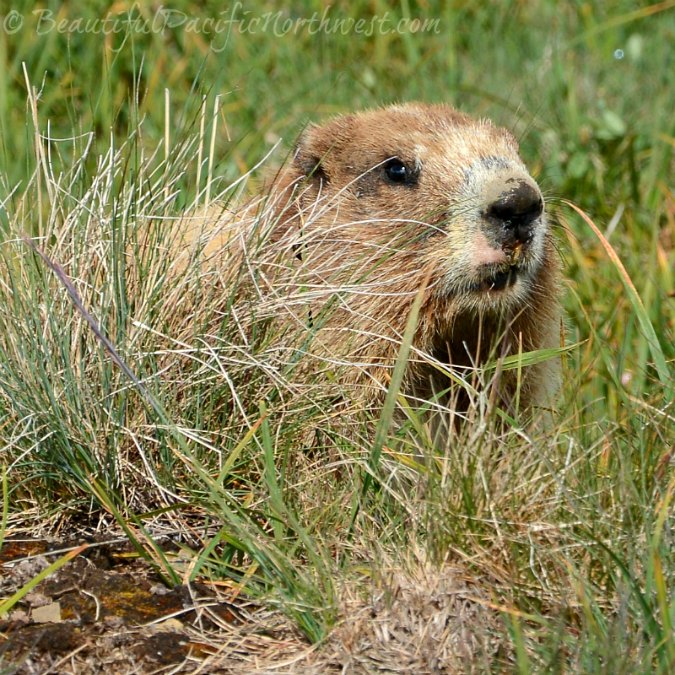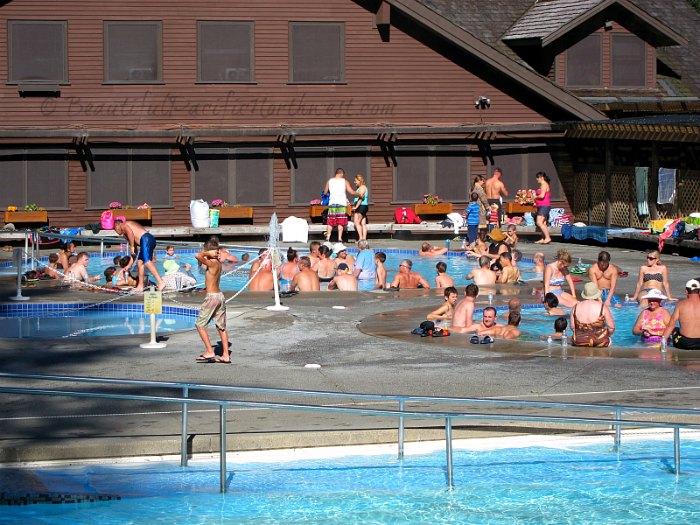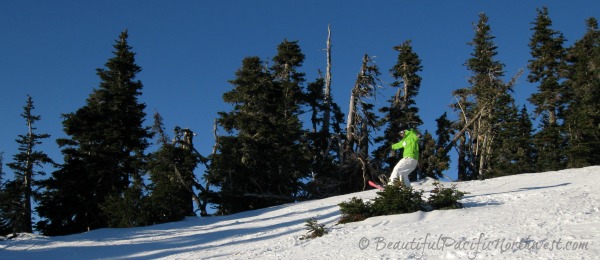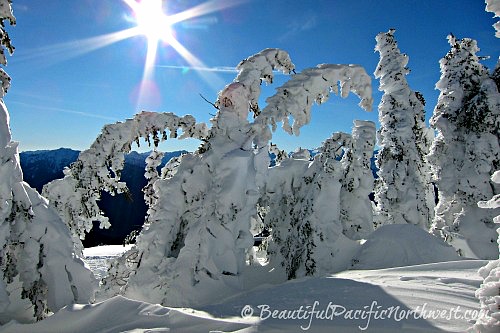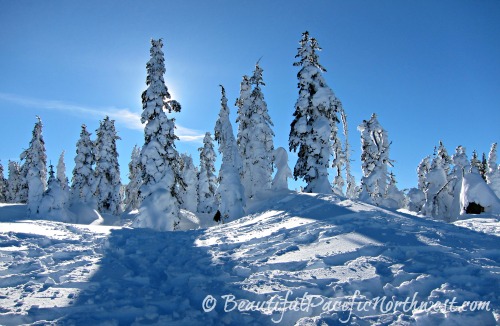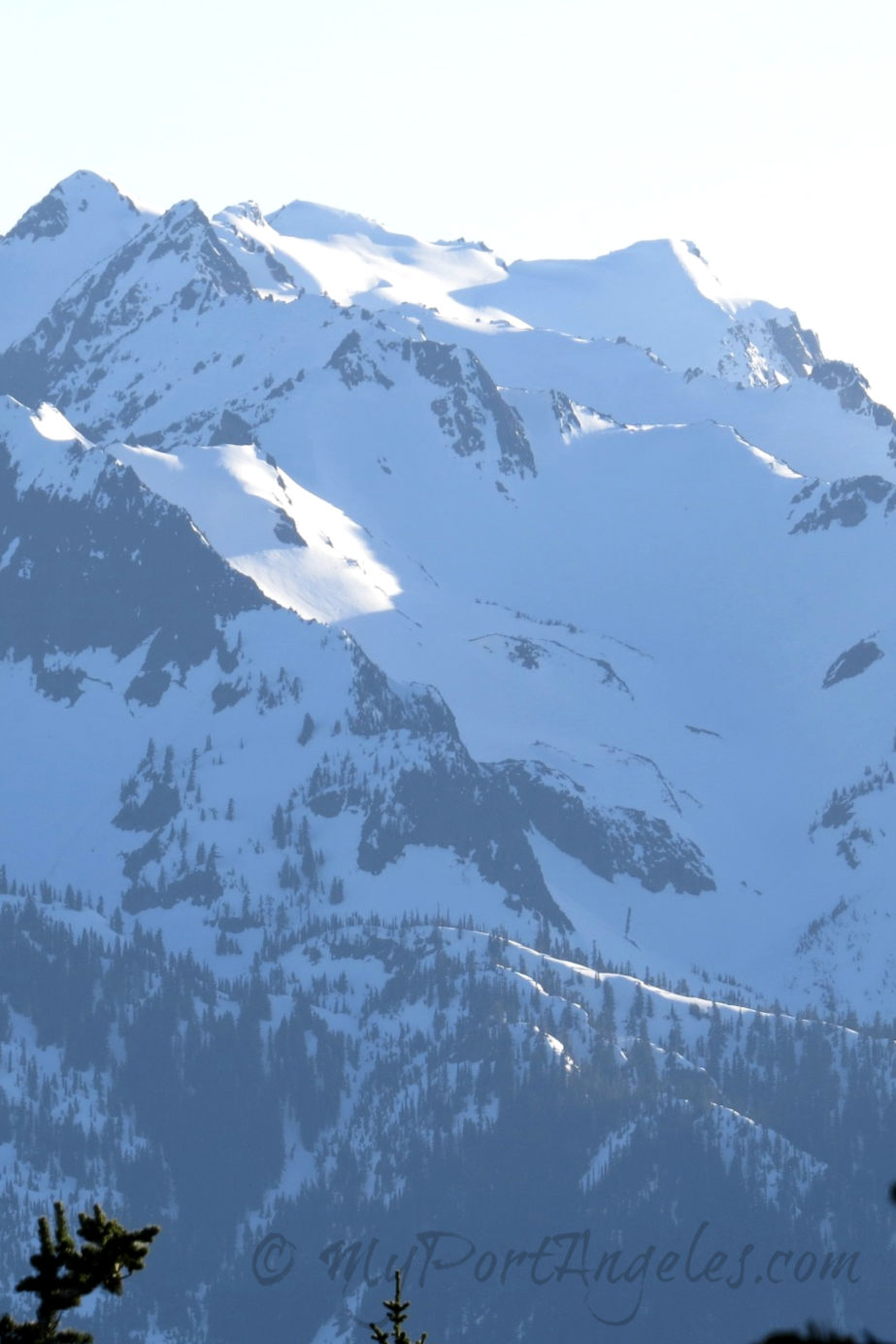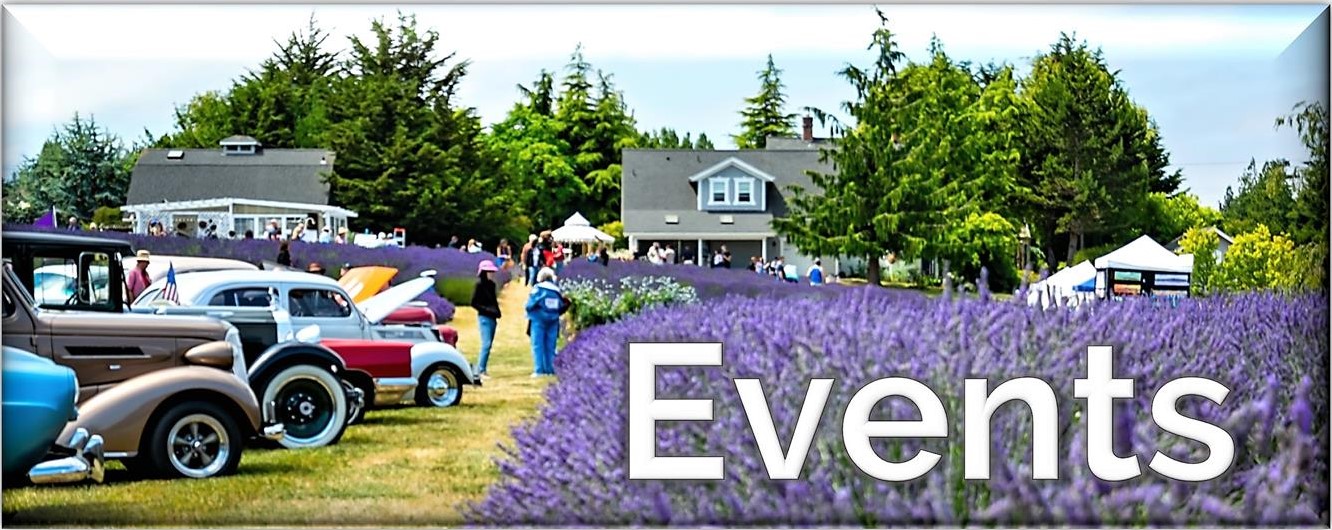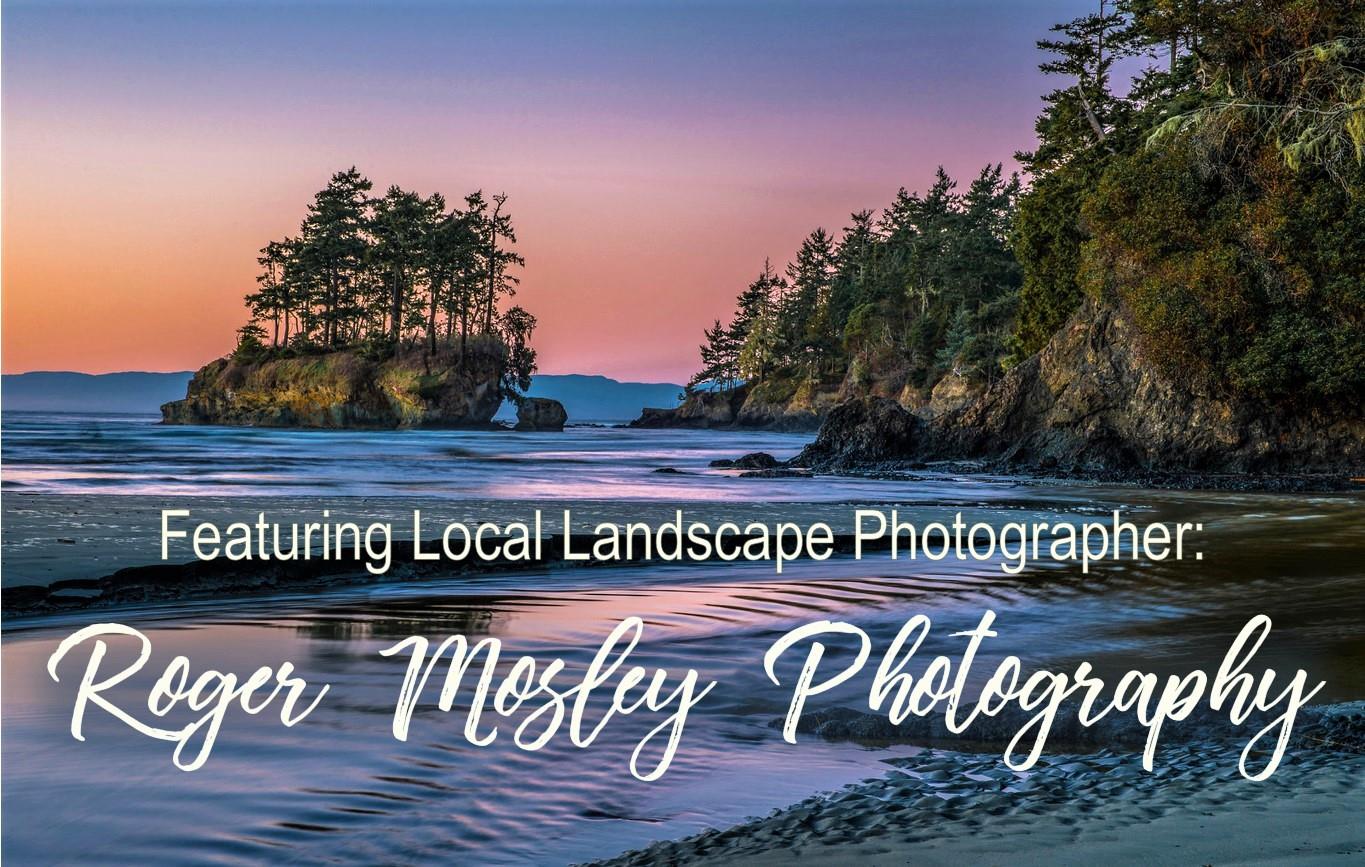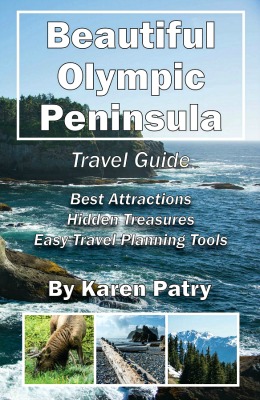Olympic National Park Washington
Olympic National Park Washington: The Olympic NP is an unforgettable, must-see destination, in my humble opinion. Add a visit to your bucket list if at all possible - for these many reasons.
Click on any photo to open a gallery of full size photos.
Why The Olympic National Park Is a 'Must-See' Destination!
Here are our top NINE reasons why we think the Olympic National Park is a 'must-see' destination. (The links will take you directly to the same topic lower on this page.)
Olympic National Park
- Seventy-three miles (117.5 km) of rugged, wild, and incredibly beautiful coastline – much of it can be hiked, not to mention the possibility of overnight camping.
- Ridiculously beautiful
vistas, scenic mountains and lakes, rugged sea stacks; every view new and more beautiful at each
turn. We're not saying you can't find beauty elsewhere, but, really, at every turn??
- Peace. Just…peace. Ahhhhhhh...
- Waterfalls, whether
over a towering precipice, or down into a roaring ravine
- Where else can you
find a pristine, temperate rainforest?? Because this is one rare ecosystem, especially in the Americas.
- Impressive as well as unique wildlife adapted to the Olympic Peninsula, and you might even encounter them during your visit.
- Natural hot pools. Choose from wild and untamed, to well maintained and commercially sanitized
- Spawning salmon readily viewed in season
- Wintertime brings snow sports and activities in the higher elevations.
1) You'll find 73 miles of rugged and wild coastline in Olympic National Park Washington.
At the Olympic National Park beaches, you’ll discover sea stacks of rocky outcroppings separated from the mainland, with fir, Sitka spruce and cedar perched atop them. You’ll encounter river mouths, tide pools, driftwood, and sandy beaches. You’ll find polished rocks and tumbled sea glass.
Don't forget your camera, and you might also want to bring wading boots - a few of the sea stacks are accessible during low tides.
Swimming or surfing is possible with a full wetsuit – the water is a frigid 45 – 53 degrees Fahrenheit (7.22-11.67 C) year round.
2) Ridiculously beautiful vistas...LOTS of them.
Ridiculously beautiful vistas, scenic mountains and lakes, rugged sea stacks, new and more beautiful at each turn. We're not saying you can't find some of these elsewhere, but, really, at every turn??
These accompanying photos provide just a taste of the beauty one can immerse oneself in.
3) Peace. Just...peace.
Peace. So many places imbued with a deep sense of peacefulness....
Pacific shorelines, glorious and expansive beaches. We mentioned beaches above. Stroll them; let the briny air and rhythm of the waves soak into your soul. Hike for miles if you need to (I have); there are rewards at the far end of those hikes above and beyond the sand between your toes or the starfish in the tidepools. Perhaps you'll also find a renewed clarity of mind, strengthening of body, or increased sense of joy.
The dripping rain forest where the air is green and hyper-oxygenated. It is good for what ails either the body or the soul. (Do bring rain gear, though there's a chance you won't need it.)
Gorgeous Vistas: Snow-capped peaks, scenic lakes, impossibly green rain forest, tumbling waters gurgling over mossy rocks or crashing over a rock face.
Nor must you only gaze from afar at beautiful beckoning scenery. Put yourself into the scene by roaming for as many days as you like in the back country. Hike into the Olympics, from the lowlands to fields of glacier lilies and across icy creeks up to the glaciated peaks themselves.
4) Striking Waterfalls in Olympic National Park Washington
Waterfalls, whether over a towering precipice, or down into a roaring ravine. The Olympic National Park offers a multitude of scenic waterfalls: Barnes Creek Falls, Marymere Falls, Madison Creek Falls, Sol Duc Falls, and a number of less-dramatic waterfalls in the Quinault Rain Forest.
5) Temperate rain forest that captures the imagination.
The majesty and size of the giant trees in a dense green and well-watered ecosystem is a thing to behold. Some of them soar 300 feet into the air and are two millennia old. Their girths might surpass 18 feet (6m). It is as though you gain a glimpse into a prehistoric time, and it has the power to move you to your very soul.
I'm just glad that isn't a T. Rex behind that tree!
In the western hemisphere, temperate rain forest biomes exist only along the northern Pacific Rim in a narrow swath of land pinned between the Pacific Ocean and the mountains to the east. This is true of a large part of the Olympic Peninsula and the Olympic National Park, where the Park has preserved large areas of rain forest in the Hoh, Queets, and Quinault Rain Forests for the rest of us to enjoy.
Outside of this narrow band of rainforest, there is nothing else like it in the rest of the United States, which is another reason why a visit is so special.
Learn more about temperate rain forest plants here.
See more Hoh Rain Forest Photos here.
6) Discover impressive and unique wildlife
Herds of Roosevelt elk are frequently seen in and around the Olympic NP, and especially in and near the Hoh Rainforest.
- Black bears, bald eagles, deer, and the usual assortment of Steller’s jays, robber jays, chipmunks, and woodpeckers all live within the Olympic National Park.
Olympic marmots, are only found within the higher altitudes of Olympic National Park Washington, but during the five months they are not hibernating, you may see them at Hurricane Ridge and along the trail to the summit of Hurricane Hill.
If you see squirrels, they are likely to be rufus-bellied Douglas Squirrels, common only in the Olympic Peninsula.
The Park plays host to the largest herd of Roosevelt elk in the wild, and for very good reason. See Temperate Rainforest Animals for more info on all the local wildlife.
- If you’re visiting the coast during March, you could very well encounter pods of humpback whales up close as they come into the shallower water. In La Push, they stop by for some annual beauty treatment, scraping barnacles off their hides before heading up to Alaska to feed.
- Orca whales are frequent visitors, and some orca pods live in the area year round. The whales of course don't confine themselves to Olympic NP waters, but if they fascinate you, consider a whale watching cruise while you're here!
7) Natural Hot Pools
Natural hot pools. Choose from wild and untamed, to well maintained and commercially sanitized.
At Sol Duc Hot Springs Resort, access to the hot pools is included in the price of your stay. The pools are filled with hot water from the springs, safe and sanitized.
You can also pay an admission fee and enjoy a good soak without spending the night.
About those wild and untamed hot pools? These are on the other side of the same mountain range, in the Elwha Valley. Unfortunately, since the Elwha Dam was removed, the Elwha River has taken joy in repeatedly jumping its banks and wiping out the road. The Park Service is working on a solution, but in the meantime, the road is closed to motorized traffic. You can certainly bike or hike in. Getting to the Olympic Hot Springs is currently a 20-mile (32 km) hike, and if the idea appeals to you, you can meet your tribe there. Just plan to spend a night camping.
8) View a Wild Salmon Spawn Event
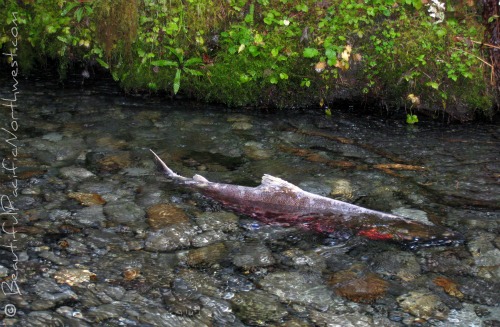 Spawning Coho Salmon in the Hoh Rainforest
Spawning Coho Salmon in the Hoh RainforestOne of the most remarkable of yearly spectacles is the wild salmon spawn, which takes place in many of the Olympic National Park's creeks through the months of Autumn and Winter, depending on the species of salmon.
Pictured: Female salmon spawning in a tributary of the Hoh River. This picture was taken in early January not far from the Visitor Center in the Hoh Rain Forest.
The Hoh, Elwha, Sol Duc, and many other rivers host yearly salmon spawns. Speak with a ranger about the timing of the salmon spawn in the area of the park you plan to visit, as weather plays a part in the timing of the spawn, as does the species of salmon.
9) Wintertime brings snow sports and activities
Not everyone appreciates a snowy vacation. It almost never snows in the rain forests or the coasts of Washington State. Rain, yes, snow, no, or at least, only very occasionally.
But! You'll find a lovely, heavy wintertime snow blanket in the higher altitudes, including Hurricane Ridge.
From October through May, and sometimes June as well, the Olympic National Park Washington is blanketed in one to ten feet (0.3 - 3 m) of snow from the altitude of a couple thousand feet (610m) and higher. Snow brings its own beauty and makes possible snow activities for the entire family at Hurricane Ridge. Winter sports fans and photography buffs love it.
Nearby Destinations on the Olympic Peninsula
The Headquarters of the Olympic National Park is in Port Angeles Washington. The following towns are not too far from Port Angeles:
- Port Townsend WA: 45 minutes east of Port Angeles.
- Sequim Washington: 25 minutes east of Port Angeles.
- Forks, Washington. Forks is one hour west of Port Angeles, and very near both the beaches and the Hoh Rainforest.
Olympic Peninsula: This page will link you to ALL places and towns around the Olympic Peninsula. These places will in turn link you to attractions, hotels, and restaurants.
More Olympic National Park Washington Resources
Our Olympic National Park page links you to ALL our Olympic National Park information. The Park is large enough, in my opinion, to keep you completely occupied for days and days.
National Park Service Website: Olympic National Park
Beautiful Olympic Peninsula Travel Guide is a great hands-on resource, covering every corner of the Olympic Peninsula. It will serve you well during your travels in this neck of the woods.
Olympic National Park Mountain Peaks
The Olympic National Park Washington contains 44 significant mountain peaks within its borders. Glaciers cloak the peaks of many of them. The Hurricane Ridge Visitor Center has a relief map showing exactly where to find each one.
Here they are, ranked according to height:
- Mount Storm King (4534ft/1382m)
- Sourdough Mountain (4600ft/1402m)
- Pelton Peak (5301ft/1616m)
- Kimta Peak (5399ft/1646m)
- Bogachiel Peak (5474ft/1668m)
- Dodger Point (5753ft/1754m)
- Hurricane Hill (5757ft/1755m)
- O’Neill Peak (5758ft/1755m)
- Muncaster Mountain (5910ft/1801m)
- Mount Wilder (5928ft/1807m)
- Mount Brotherton (5960ft/1817m)
- Mount Lena (5995ft/1827m)
- Mount Appleton (6000ft/1829m)
- Blue Mountain (6007ft/1831m)
- Mount Cruiser (6104ft/1860m)
- Mount Christie (6177ft/1883m)
- Mount Dana (6209ft/1893m)
- Mount Seattle (6246ft/1904m)
- White Mountain (6400ft/1951m)
- Maiden Peak (6434ft/1961m)
- Mount Skokomish (6434ft/1961m)
- Mount Angeles (6454ft/1967m)
- Mount Queets (6480ft/1975m)
- Sentinel Peak (6592ft/2009m)
- McCartney Peak (6728ft/2051m)
- Elk Mountain (6764ft/2062m)
- Mount Baldy (6797ft/2072m)
- Mount Claywood (6836ft/2084m)
- The Brothers (6866ft/2093m)
- Chimney Peak (6911ft/2106m)
- Mount Carrie (6995ft/2132m)
- Mount Anderson (7330ft/2234m)
- Mount Constance (7743ft/2360m)
- Mount Deception (7788ft/2374m)
- Mount Olympus (7980ft/2432m) – West, Middle and East Peaks
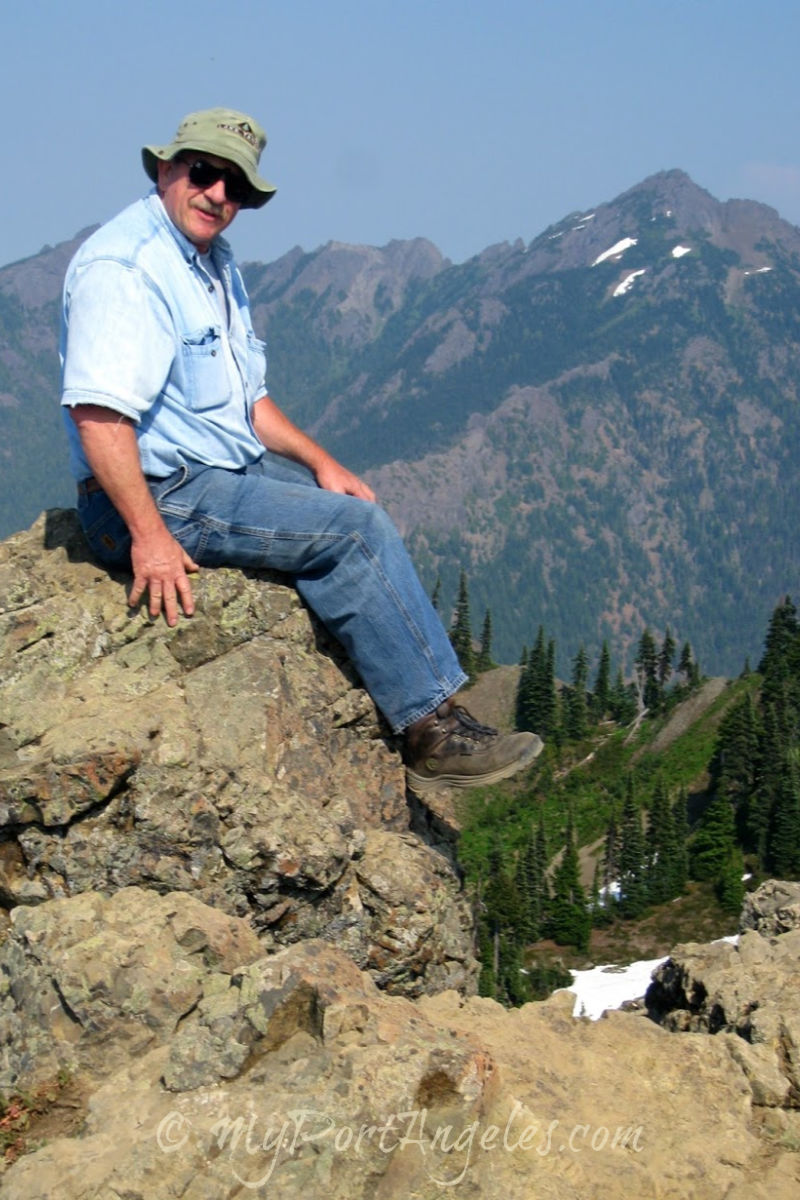 Summertime view of Olympic Mountain peaks to the north, from the summit of Hurricane Hill.
Summertime view of Olympic Mountain peaks to the north, from the summit of Hurricane Hill.